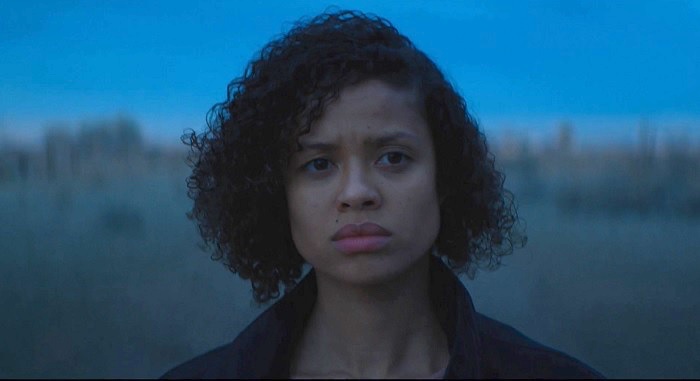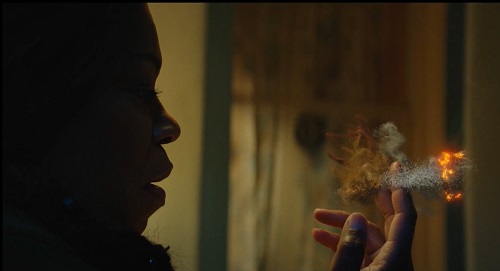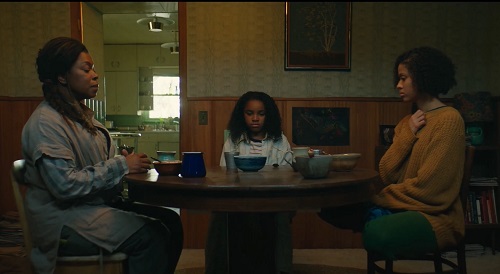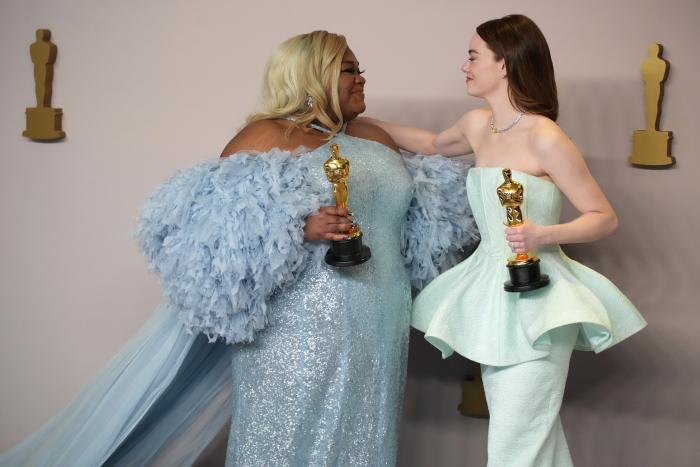

Review: Centering a Family of Complex Black Women, ‘Fast Color’ Considers Matrilineal Strength as an Insuppressible Superpower
By Roxana Hadadi | Film | April 19, 2019 |
By Roxana Hadadi | Film | April 19, 2019 |

The superhero genre is such that all of the elements of Fast Color feel somewhat familiar: a young woman on the run, a power she can’t control, a past she’s trying to escape, a nefarious government organization out to get her. The overlap between Fast Color and comic book adaptations like X-Men or YA fare like The Darkest Minds is definitely, undeniably there—on the surface. Because what I thought of while watching the quietly confident film from filmmaker Julia Hart wasn’t any of those genre flicks, but of something very different: Toni Morrison’s Beloved.
Was Beloved banned by your high school? We read it in our senior year AP lit class, and then again in an imaginary realism course I took in graduate school, and that book seeps into your bones. Morrison’s explorations of pain, trauma, and love in a story about a family of black women is devastating and unforgettable. These women survived horrors inflicted upon them, the destruction of their loved ones and themselves, and yet tried to live on, to exist in a reality that is literally haunted by ghosts. They can’t forget those abominable cruelties and they don’t necessarily want to; to remember what happened is to remember that you’re alive. It’s a combination of defiance and guilt, of regret and devotion.
I’m not trying to say that Fast Color is on the level of Beloved because Morrison’s novel is a once-in-lifetime text and I’m not crazy. But elements of these stories are similar: black women hiding from the world in order to survive; capable of immense, inexplicable power that no one else seems to understand; multifaceted beings of strength and fragility and selfishness and loyalty. Remember the wisdom and ferocity Oprah infused in her portrayal of the star-turned-immortal being Mrs. Which in Ava Duvernay’s A Wrinkle in Time? Sort of like that.

Fast Color begins with Ruth (Gugu Mbatha-Raw, who also appeared in A Wrinkle in Time, if you recall), a woman who has clearly seen some shit. She knows how to case buildings, how to smash out windows, how to use a knife to cut away her restraints, how to handle a gun. She has a go-bag with medical supplies and rags to rip into bandages, barely any money, and a routine she sticks to. Don’t attract any attention. Don’t make small talk. Don’t be noticed.
All of this is difficult when the country seems to be in the early stages of dystopian ruin: It hasn’t rained in eight years, water is increasingly scarce (and expensive), and crops have long since died. Everyone is already desperate, more willing to take risks for personal gain, perhaps more open to betraying someone close to them for some sort of benefit. And in that environment is Ruth, running from something or someone, and oh yeah, she has a secret: She has seizures that are capable of causing earthquakes.
Ruth’s journey is taking her away from who is trailing her, an unnamed force led by the seemingly-nice-actually-nefarious scientist Bill (Christopher Denham), and toward people she’s left behind, the older Bo (Lorraine Toussaint) and the younger Lila (Saniyya Sidney). Their connections are revealed quickly (the movie has a 110-minute run time and doesn’t loiter in its pacing), and the movie is efficient in its sci-fi storytelling, adding in a backstory that sketches in essentials without getting overly complicated. You’ll buy the world in which Fast Color exists because Hart and co-writer Jordan Horowitz keep things mostly simple, and also because this cast is so damn good.

As the center of this story, Mbatha-Raw has to be varyingly tough, fragile, devoted, and lost, and her exceptional balance here brings to mind her excellent turn in Beyond the Lights. Her raw-nerve energy is fantastic when contrasted with Toussaint’s calm authoritarianism, and a scene at a breakfast table, when the two women bracket Sidney’s young Lila, makes stark the complicated alliances and affections that exist within women, within families, within multiple generations. The three make a fantastic ensemble and are key to elevating this material above recognizable tropes and into something weightier, more relevant to our current time.
OK, so maybe I lied—I did think of one comic book film while watching Fast Color: Logan. That too was a story about endings and beginnings, about generational change in the face of relentless bureaucratic evil, and about the power of children and young adults to change the world. The black-girl-magic angle of Fast Color gives it a unique quality, though, that isn’t quite like anything else you’ve seen in this genre, from its Lisa Frank visuals courtesy of cinematographer Michael Fimognari (of Netflix’s The Haunting of Hill House and To All the Boys I’ve Loved Before) to the narrative’s matrilineal presentation of power. Superhero-movie behemoth Avengers: Endgame is lurking around the corner, but give your attention to Fast Color first.
← Trailer for 'When They See Us', Ava DuVernay's Netflix Miniseries on the Central Park Five | 20 Years Since Its Finale, 'Cowboy Bebop' is Still Defining Pop Culture →
More Like This
'The Gentlemen' Review: Ritchie's Latest Episodic Caper is a Blast for Fans of his Formula
Kristen Stewart's 'Love Lies Bleeding' Is Gonna Kick Your Ass And Make You Beg For More
What the Hell Is Going On in Apple TV+'s 'Constellation'?
‘Shōgun’ is TV’s Next Big Epic
It's Not the Filmmakers' Fault that Bill Belichick Sucks in 'The Dynasty: New England Patriots'

What’s Old Is New Again: Old Hollywood Glamour Glitters at the 2024 Oscars
Al Pacino Presents Best Picture Oscar, Confuses Everyone
The Dangerous Lie Of 'TradWives'
A Legendary Horror Franchise Is Headed To Television
'The Mandalorian' Season 4 Is Probably Not Happening
Halle Bailey On Why She Chose To Keep Her Pregnancy Private
More Like This
'The Gentlemen' Review: Ritchie's Latest Episodic Caper is a Blast for Fans of his Formula
Kristen Stewart's 'Love Lies Bleeding' Is Gonna Kick Your Ass And Make You Beg For More
What the Hell Is Going On in Apple TV+'s 'Constellation'?
‘Shōgun’ is TV’s Next Big Epic
It's Not the Filmmakers' Fault that Bill Belichick Sucks in 'The Dynasty: New England Patriots'
Reviews